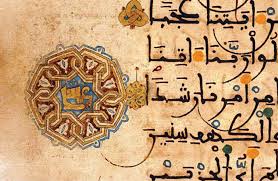Difference between revisions of "Language/Standard-arabic/Culture/The-Arabic-language"
m (Quick edit) |
|||
| (4 intermediate revisions by 2 users not shown) | |||
| Line 1: | Line 1: | ||
[[File:Arabic language.jpg|thumb]] | [[File:Arabic language.jpg|thumb]] | ||
Hi everyone, In this lesson, you will learn about my beautiful language which is '''Classical Arabic'''. | |||
The Arabic language appeared in the Arabian Peninsula | The Arabic language appeared in the Arabian Peninsula. | ||
It is considered a sacred language for Muslims because the Quran, prayers and rituals are written and spoken in Arabic. | |||
For this this reason it is used throughout the world and it has become one of the most important and widespread languages in the world. | |||
The number of letters in the Arabic language is twenty-eight written letters, and it is written from the right side to the left, unlike many languages in the world, except Hebrew and Persian. | |||
Its sciences are: | Its sciences are: | ||
| Line 14: | Line 17: | ||
*The science of derivation. | *The science of derivation. | ||
Many Muslims are good at reading and pronouncing it because they want to read the Quran correctly from a young age. | |||
<span link>With the completion of this lesson, consider investigating these related pages:</span> [[Language/Standard-arabic/Culture/Celebrations-and-events:-Ramadan-and-Eid|Celebrations and events: Ramadan and Eid]] & [[Language/Standard-arabic/Culture/Why-Learn-Arabic|Why Learn Arabic]]. | |||
==Other Lessons== | |||
* [[Language/Standard-arabic/Culture/Bahrain-Timeline|Bahrain Timeline]] | |||
* [[Language/Standard-arabic/Culture/Hot-Mood|Hot Mood]] | |||
* [[Language/Standard-arabic/Culture/Dabke-dance|Dabke dance]] | |||
* [[Language/Standard-arabic/Culture/Jordan-Timeline|Jordan Timeline]] | |||
* [[Language/Standard-arabic/Culture/Celebrations-and-events:-Ramadan-and-Eid|Celebrations and events: Ramadan and Eid]] | |||
* [[Language/Standard-arabic/Culture/The-3-Types-of-Arabic-Language|The 3 Types of Arabic Language]] | |||
* [[Language/Standard-arabic/Culture/Kuwait-Timeline|Kuwait Timeline]] | |||
* [[Language/Standard-arabic/Culture/Lebanon-Timeline|Lebanon Timeline]] | |||
* [[Language/Standard-arabic/Culture/Television|Television]] | |||
<span links></span> | |||
Latest revision as of 10:35, 27 March 2023
Hi everyone, In this lesson, you will learn about my beautiful language which is Classical Arabic.
The Arabic language appeared in the Arabian Peninsula.
It is considered a sacred language for Muslims because the Quran, prayers and rituals are written and spoken in Arabic.
For this this reason it is used throughout the world and it has become one of the most important and widespread languages in the world.
The number of letters in the Arabic language is twenty-eight written letters, and it is written from the right side to the left, unlike many languages in the world, except Hebrew and Persian.
Its sciences are:
- The grammar,
- The science of rhetoric,
- The science of performances and rhymes,
- The science of derivation.
Many Muslims are good at reading and pronouncing it because they want to read the Quran correctly from a young age.
With the completion of this lesson, consider investigating these related pages: Celebrations and events: Ramadan and Eid & Why Learn Arabic.
Other Lessons[edit | edit source]
- Bahrain Timeline
- Hot Mood
- Dabke dance
- Jordan Timeline
- Celebrations and events: Ramadan and Eid
- The 3 Types of Arabic Language
- Kuwait Timeline
- Lebanon Timeline
- Television
